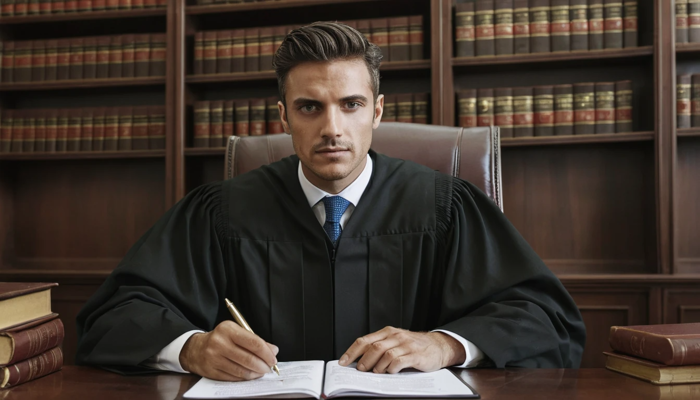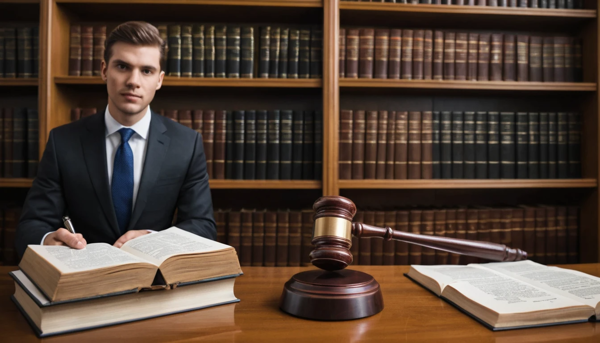Legal protection for creative works ensures your ideas stay yours. Learn how to safeguard your creations effectively and confidently.
Legal protection for creative works safeguards your ideas, designs, and creations from unauthorized use. Copyrights, trademarks, and patents provide creators with exclusive rights, ensuring recognition, control, and potential revenue from their original work.
Legal Protection For Creative Works: How To Safeguard Your Ideas 🎨
Have you ever wondered what would happen if someone stole your creative idea? 😱 Whether you’re an artist, writer, or designer, protecting your creative works legally is crucial. Without proper safeguards, your ideas could be copied, sold, or exploited without your permission.
Understanding the legal tools available can give you control, recognition, and even financial benefits for your hard work. Let’s dive into the ultimate guide on securing your creative creations.
What Counts As Creative Works? ✍️
Creative works include art, literature, music, software, designs, and multimedia content. Anything original that expresses your imagination can be considered a creative work.
Some common examples:
- Novels, short stories, and poems
- Paintings, sculptures, and digital art
- Songs, compositions, and lyrics
- Software programs and mobile apps
Note: Ideas alone are not protected. Only the expression of ideas is eligible for legal safeguards.
Understanding Copyright: Your First Line Of Defense 📚
Copyright is the most common legal protection for creators. It automatically protects original works the moment you create them.
Key benefits of copyright include:
- Exclusive right to reproduce and distribute your work
- Right to perform, display, or adapt the work
- Ability to license or sell your creative work
Copyright does not protect:
- Facts or ideas
- Common knowledge or public domain content
The Role Of Trademarks In Creative Works 🏷️
Trademarks protect brands, logos, and unique names connected to your creative work. They ensure your audience can identify your work easily.
Benefits of trademarks:
- Prevent others from using a confusingly similar brand
- Build trust and brand value
- Protect digital content like YouTube channels or blogs
For example, a unique logo for a digital art studio can be trademarked to prevent imitation.
Patents: Protecting Innovative Creations ⚙️
Patents are ideal for inventions, processes, or unique designs. If your creative work involves a novel process, patenting it can secure exclusive rights for a period of time.
Advantages of patents:
- Exclusive rights to use or sell the invention
- Protection against competitors copying your innovation
- Potential for licensing revenue
Remember: purely artistic works typically do not qualify for patents.
Trade Secrets: Keeping Creative Processes Confidential 🤫
Sometimes your creative value lies in how you do something, not the end product. Trade secrets safeguard these methods.
Important aspects of trade secrets:
- Keep the process confidential
- Implement non-disclosure agreements (NDAs)
- Maintain internal security measures
Trade secrets are ideal for recipes, design techniques, or proprietary software algorithms.
How To Register Copyright For Maximum Protection 🖋️
While copyright exists automatically, registration provides stronger legal enforcement.
Steps to register:
- Complete the application with your national copyright office
- Submit a copy of your work
- Pay the applicable fees
Registration ensures:
- Public record of ownership
- Ability to sue for infringement
- Potential compensation for damages
Licensing Creative Works: Sharing Without Losing Rights 📄
Licensing lets others use your work while you retain ownership. This can generate revenue and expand your audience.
Types of licenses:
- Exclusive: Only one person can use the work
- Non-exclusive: Multiple parties can use the work
- Creative Commons: Flexible permissions for sharing
Licensing keeps your rights intact while monetizing your creations.
Fair Use: When Others Can Legally Use Your Work ⚖️
Fair use allows limited use of copyrighted material without permission. It’s often applicable for education, commentary, or critique.
Key points:
- Purpose must be non-commercial or transformative
- Use must not harm the original creator financially
- Only a small portion of the work can be used
Understanding fair use prevents unnecessary conflicts and strengthens your legal claims.
Digital Rights Management: Protecting Online Content 🌐
In the digital era, online theft is a real threat. Digital Rights Management (DRM) helps protect digital files from unauthorized copying or distribution.
Benefits of DRM:
- Limits downloads and sharing
- Adds watermarks or tracking mechanisms
- Protects e-books, music, and video content
DRM acts as a tech layer complementing legal protection.
Common Threats To Creative Works 🚨
Knowing the risks is key to effective protection. Common threats include:
- Plagiarism and idea theft
- Unauthorized reproduction or distribution
- Misuse of your brand or logo
- Online piracy or hacking
Staying proactive with legal tools and monitoring can minimize these risks.
How To Enforce Your Legal Rights ✊
Even with protections in place, enforcement is crucial. Steps include:
- Send cease-and-desist letters
- File claims with hosting platforms
- Pursue legal action in court
Documentation, registration, and clear licensing agreements make enforcement smoother and more effective.
Cost Considerations For Legal Protection 💰
Protecting creative works can be affordable or costly, depending on the method:
| Protection Type | Average Cost | Duration |
| Copyright | $35–$85 | Life + 70 years |
| Trademark | $250–$500 | 10 years (renewable) |
| Patent | $5,000–$15,000 | 20 years |
| Trade Secret | Varies | Indefinite (as long as secret is maintained) |
Budgeting for legal safeguards is a wise investment for long-term security.
International Protection: Going Global 🌎
If your work reaches audiences worldwide, consider international protection. Different countries have varying laws, but treaties like the Berne Convention help.
Tips for international protection:
- Register in key markets
- Monitor online infringement globally
- Consult with an IP attorney for cross-border guidance
Tips For Creators To Stay Safe Daily 🛡️
Protecting creative works isn’t just legal—it’s practical. Daily habits include:
- Keep copies of all drafts and designs
- Use timestamps and digital watermarks
- Sign NDAs with collaborators
- Track where your work is shared online
Small preventive steps save major headaches later.
Benefits Of Legal Protection For Creators 🌟
Legal protection isn’t just about defense; it empowers creators. Benefits include:
- Exclusive ownership and recognition
- Revenue opportunities through licensing
- Peace of mind and creative freedom
It ensures your hard work is valued and respected.
Conclusion: Secure Your Creativity Today 🎯
Legal protection for creative works is essential in today’s fast-moving world. From copyrights to trademarks, patents, and trade secrets, every creator can find a safeguard that fits their work. By understanding your rights, registering, and monitoring your creations, you ensure your ideas remain yours—protected, recognized, and potentially profitable.
FAQs
What is the easiest way to protect creative works?
Copyright registration is the simplest way. It offers legal proof of ownership and is inexpensive.
Can I protect an idea before it’s created?
Ideas alone aren’t protected. Legal safeguards apply only to the expression of ideas.
How long does copyright last for my work?
Copyright lasts for the creator’s life plus 70 years in most countries.
Do I need a lawyer for copyright registration?
Not always. You can register yourself, but a lawyer helps with complex works or disputes.
Can I monetize my protected work legally?
Yes! Licensing and selling your work are legal ways to earn revenue.


